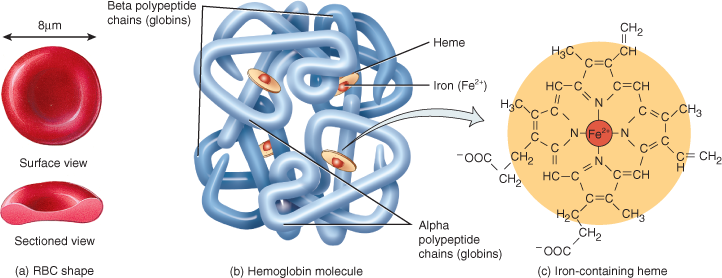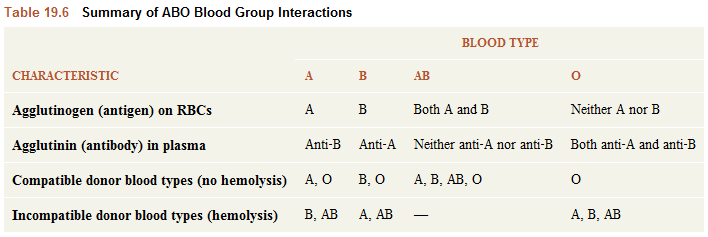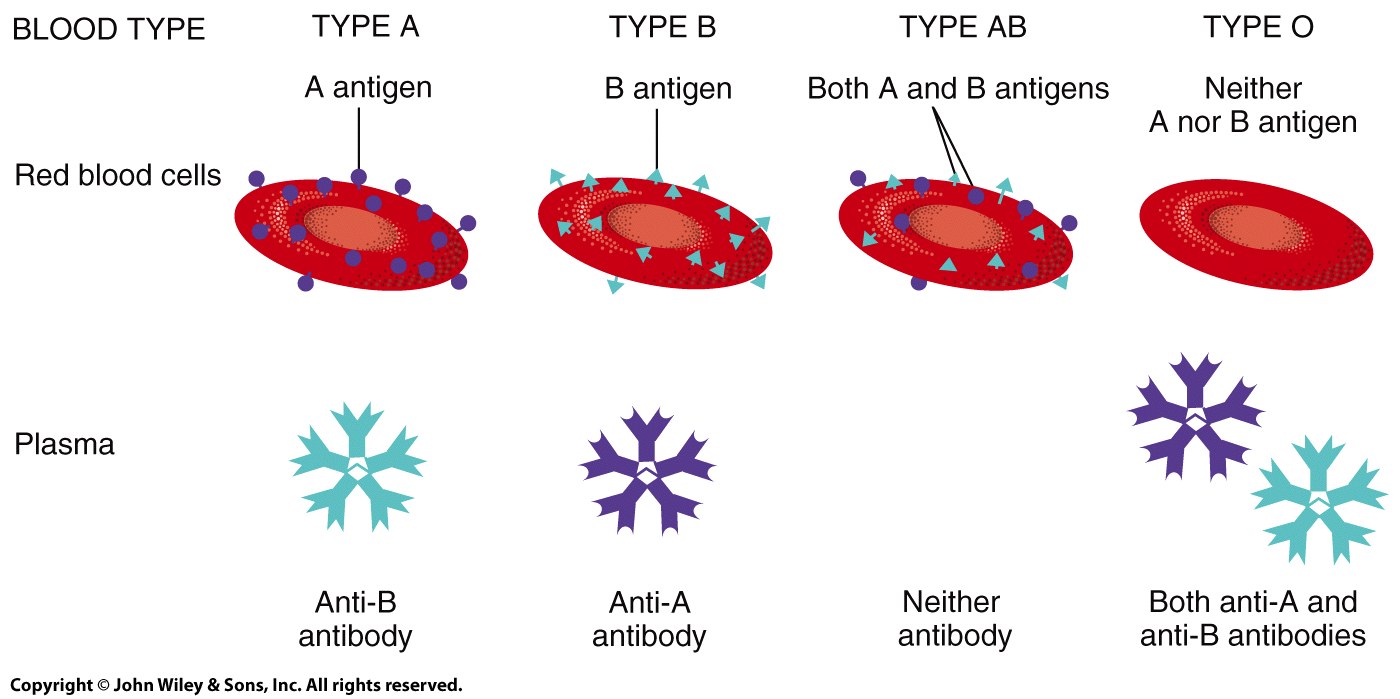Blood is a viscous, extracellular fluid that consists of plasma and the following formed elements: red blood cells, white blood cells, and platelets. Performing this activity will help you understand how changes in red blood cells affect their function, and the importance of blood typing.
Objectives
- Measure hematocrit and hemoglobin concentration after training at low and high altitudes.
- Perform ABO and Rh blood typing.
Review
Play the animation to review your knowledge of blood composition.
After you have completed this section, click on the Pre-Lab Quiz button at the top menu to assess your understanding.
The Structure and Function of Red Blood Cells (Erythrocytes or RBCs) are small, anucleate, biconcave cells in which a third of the cytosol is filled with hemoglobin, a large molecule used to transport oxygen and carbon dioxide in the blood. Red blood cells are produced in red bone marrow and synthesis is stimulated by erythropoietin, a hormone secreted by the kidneys.
Red blood cells are specialized to carry oxygen. Their biconcave shape increases the surface area for gas diffusion. The absence of a nucleus enables them to hold more hemoglobin and the lack of mitochondria means they do not use oxygen to generate ATP.
Blood Tests
In this activity, the following blood tests will be performed to reflect the oxygen capacity of blood: Hematocrit or Hct (% of RBCs in whole blood) and Hemoglobin (Hb) concentration in RBCs.
ABO and Rh Blood Types
Red blood cell membranes have hereditary proteins called antigens (agglutinogens) that determine a person’s blood type. Antibodies (agglutinins) are also hereditary proteins made by the immune system (immunoglobulins) that flow in the blood plasma. Antibodies from an incompatible blood type can react with the antigens and cause agglutination (clumping) in the recipient’s blood causing a potential life-threatening situation. Although there are many different antigens on RBCs, ABO and Rh blood typing is always performed prior to blood transfusions because these antigens cause the most fatal transfusion incidents. There can also be blood incompatibility between an Rh- mother and an Rh+ baby. This is the reason an Rh- mother is given Rh immunoglobulin (contains antibodies to the Rh factor) shots to prevent her body from producing Rh antibodies, even though this isn’t typically a problem with the first pregnancy. There is no Rh incompatibility if both the baby and the mother have the same Rh blood type.
Measurement of Hct and Hb
To measure a hematocrit, a capillary tube is filled with a whole blood sample and then centrifuged to pack the RBCs at the bottom of the tube. This separates them from the WBCs, platelets, and plasma. The hematocrit is calculated by dividing the length of the packed RBC column by the length of the whole blood sample.
Hemoglobin concentration (g/100 ml) is measured using a hemoglobinometer. A hemoglobinometer uses a colorimetric assay to measure the amount of hemoglobin in hemolyzed blood.
ABO Blood Typing
Anti-sera is used to determine the presence or absence of A, B, or Rh antigens on the surface of RBCs.
Agglutination (clumping) with anti-A serum indicates presence of A antigen on RBCs whereas absence of agglutination indicates no A antigen. Agglutination (clumping) with anti-B serum indicates presence of B antigen on RBCs whereas absence of agglutination indicates no B antigen. Agglutination (clumping) with anti-Rh serum indicates presence of Rh antigen on RBCs whereas absence of agglutination indicates no Rh antigen.



